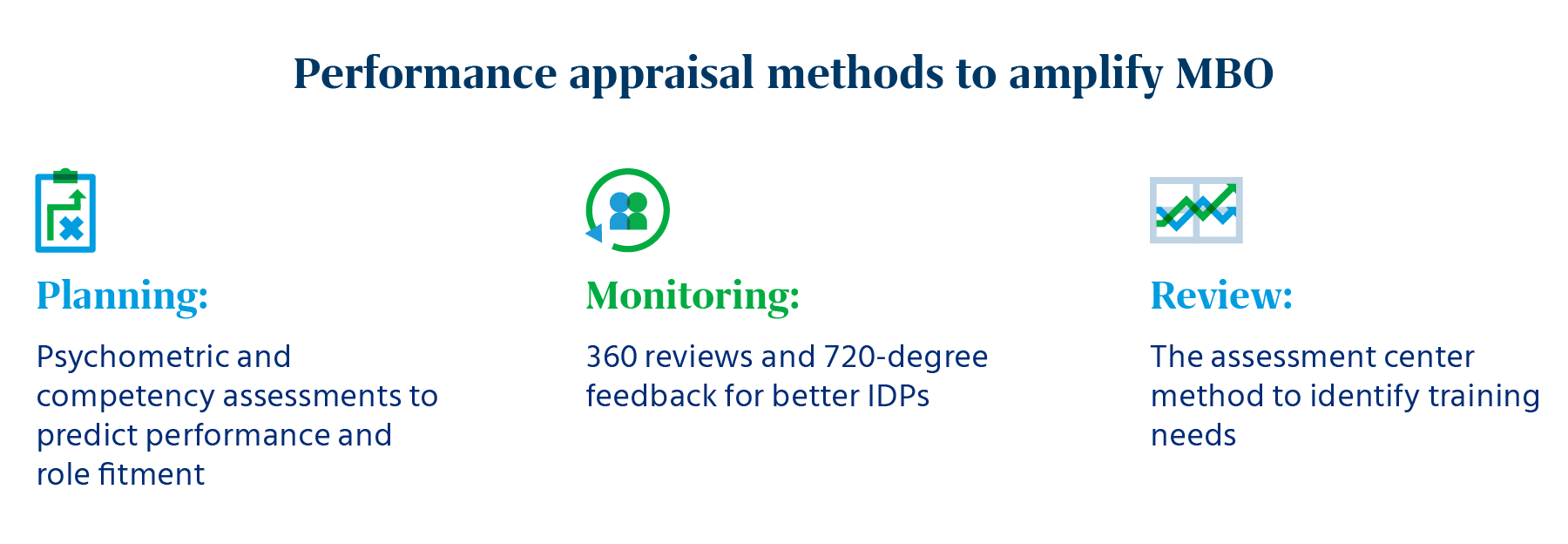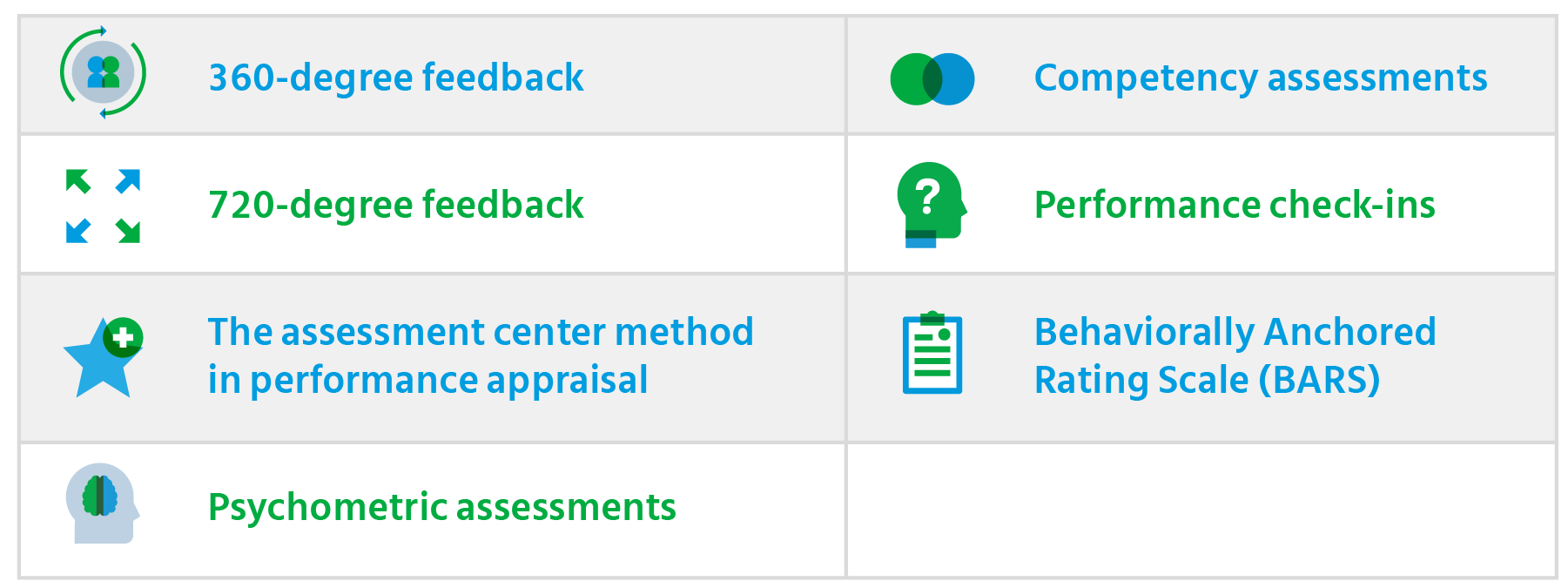Various types of psychometric assessments are used to measure a candidate’s role-specific potential, industry-specific aptitude, personality traits and other essential qualities. Various question formats can support such an analysis, depending on the goal of the assessment.
These assessments are also known as psychological appraisals and help analyze six major components of an employee’s performance:

Psychometric assessments help determine whether employees can achieve a certain level of development within a specific area. Additionally, they are easy-to-implement before making important workforce management decisions.
Psychometric assessments offer predictive insights about employees, allowing decision-makers to chart a more streamlined career trajectory for individuals within the company.
How organizations can use personality and aptitude tests
As part of the larger umbrella of psychometric assessment, personality and aptitude tests can be beneficial tools in the performance appraisal process. Aptitude measurement covers understanding an individual’s intelligence and the ability to acquire new skills, becoming a future indicator of high performance.
Contrarily, personality and behavioral tests account for assessing the traits that attribute to the positive impact of the individual based on the organization’s existing environment. While aptitude tests inform whether employees can do the assigned job, personality and behavioral profiling help understand if the employees are suited for a specific professional level.









 Behavioral Competencies
Behavioral Competencies Cognitive Competencies
Cognitive Competencies Coding Competencies
Coding Competencies Domain Competencies
Domain Competencies











































Would you like to comment?